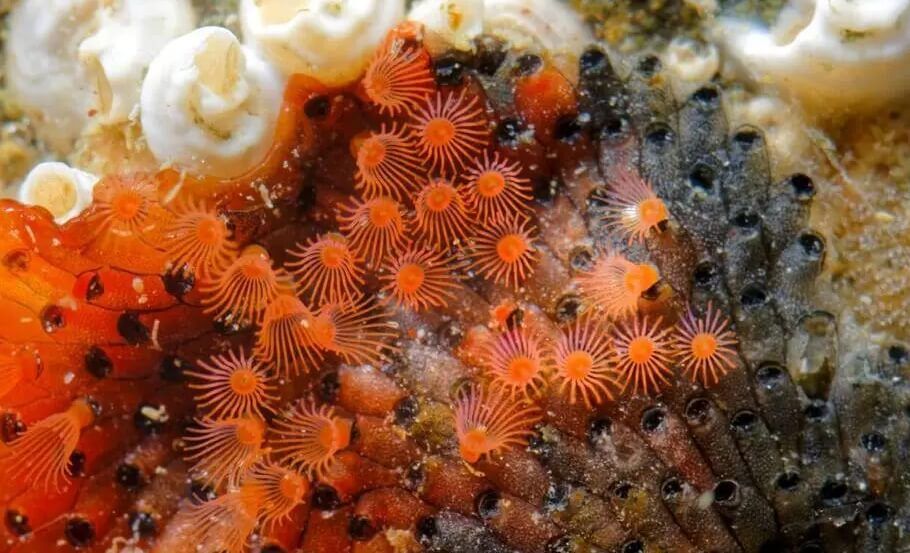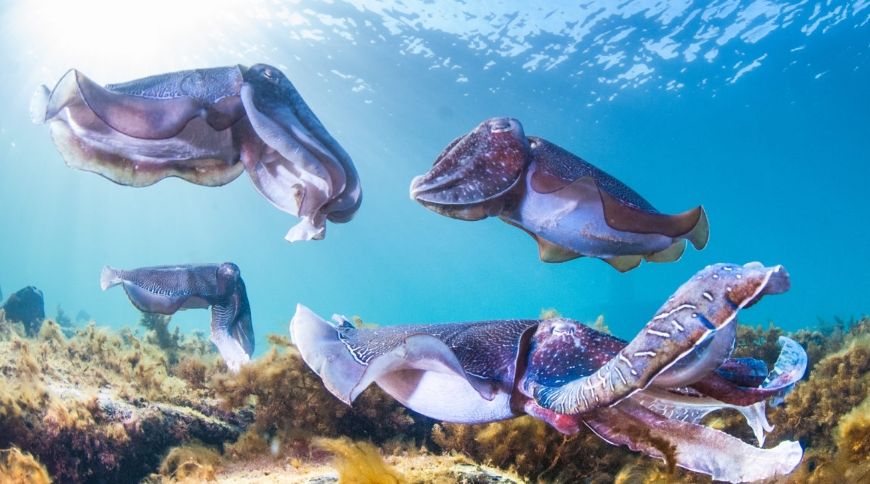Originally from Japan, Watersipora subatra is gradually invading oceans and seas worldwide. The introduction of a species into a new ecosystem can sometimes lead to irremediable ecological imbalances. In the marine environment, the consequences can be serious due to the difficulty of intervention.
There are some spectacular examples, such as the tropical green algae Caulerpa taxifolia in the Mediterranean or the king crab in Kamchatka. These crabs, originating from the Bering Sea between eastern Russia and Alaska, were introduced into the Barents Sea to develop a fishery there and support local employment. Finding favorable ecosystems, this species quickly extended its range westward and colonized the coasts of Norway, currently as far as the Lofoten Islands. It represents a threat to the ecosystems it colonizes and disrupts their functioning profoundly, particularly by ingesting fish eggs, including those of pout and cod.
Fortunately, in the majority of cases, introduced species are more discreet, which does not exclude monitoring them to detect any disturbance in ecosystem functioning or the disappearance of other species.
The bryozoan Watersipora subatra illustrates the example of a discreet introduction but a very effective ability to colonize new environments – originating in Japan, it has spread widely throughout the Brittany coast in just a decade.
If its arrival in Europe may be due to the presence of colonies in the spat (juveniles) of Japanese oysters, its expansion could also take place via the attachment of its larvae or colonies to the hulls of ships (a phenomenon commonly called “fouling”), or by drifting algae on which colonies could develop.
A Variety of “Foam Animals” Around the World
Bryozoans, literally known as “moss animals,” are colonial creatures, mostly fixed on a substrate, inert or alive, and mostly found in marine environments. Each individual, called a zoid or zoecia, resides in a millimetric chamber within a colony, the zoarium, which can be encrusting, erect, or shrubby and measure from a few centimeters to several tens of centimeters. The nutrition and respiration of bryozoans are ensured by a current of water created by a crown of tentacles called “lophophore.” Some species contribute to the construction of coral reefs in warm seas since the lodges are mostly carbonated. The shape, size, and arrangement of the chambers help recognize different species.
By their larvae or colonies present in the “fouling,” some species can be easily transported from port to port and are currently colonizing the European coast.
Such is the case with Watersipora subatra, native to Japan, which has been identified as an introduced species in the North-East Atlantic, the Indo-Pacific (Indonesia), the South-West Pacific (Australia, New Zealand), and the Northeast Pacific (California). Taxonomically, this genus includes 13 species that are sometimes morphologically similar, leading to uncertainties before definitively identifying the Watersipora present on European coasts.
Along the European Atlantic coasts, this species was initially identified as Watersipora aterrima in the Arcachon basin between 1968 and 1973, then as Watersipora subovoidea in Brittany in 2005, and later revised as Watersipora subtorquata in 2009. It is now known that the species present in Brittany, around the British Isles, and in the North Sea is, in fact, Watersipora subatra, and that four other species are present on the rest of the European coasts.










